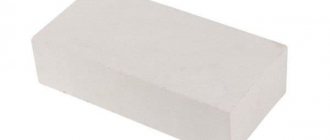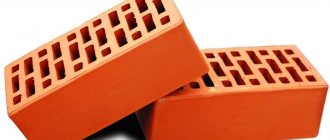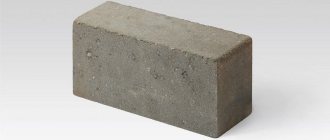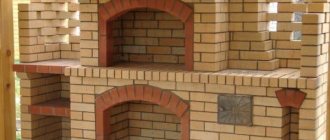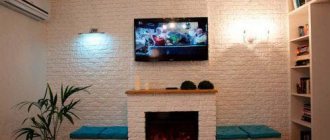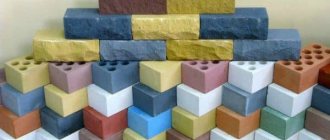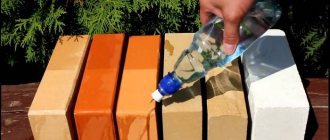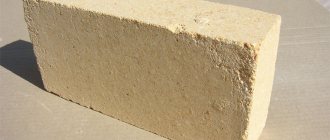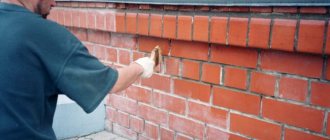Brick is a very popular material in modern construction. And there is a logical explanation for this. The thing is that this material is durable, comfortable and beautiful. Houses have been built from brick for a very long time, but construction technologies do not stand still, which means that more and more new varieties of brick will appear. The times when only red ceramic bricks were used in construction are slowly passing. This means it is being replaced by a new brick, which is distinguished by its reliability - white sand-lime brick. It is obtained by mixing sand and lime. Although, to be honest, red brick still remains popular. Many experienced builders use it in the construction of private houses.
White sand-lime brick. Review article
But we must understand that if the question arises of choosing between red and white bricks, it will not be true to say that one brick is better and the other worse. The fact is that these are absolutely two different materials, although they have a similar purpose and name. Therefore, when choosing which brick is better, we should focus only on the area of application of various types of bricks. For example, an adequate builder will not build a building 9 floors high from ordinary red brick; it is understandable that he simply will not have enough strength. And in the northern regions, few people will use red brick, because it will not have enough frost resistance.
Red brick is usually chosen because it is cheaper. However, our task is to understand all the intricacies of white sand-lime brick and understand whether it is really as good as they claim. Before studying this article, we recommend that you read the article where we briefly describe all types of bricks and their characteristics, this will help you navigate your choice.
How to make white sand-lime brick
White sand-lime brick appeared not so long ago. It was created only in the twentieth century. This is due to the fact that modern technologies for the production of building materials of artificial origin are used to produce such material. Without them, we won’t see sand-lime brick. In the case of white brick, this is autoclave synthesis . This is how the production of white sand-lime bricks works.
Sand-lime brick on a pallet
- air lime and quartz sand very well , proportion 1:9. Then you need to press the mixture well in a semi-dry environment. This is necessary in order to form future products.
- These same pressed blanks are sent inside the autoclave at a pressure of 9-12 atm and high temperature, the values of which range from 170 °C to 200 °C. Thanks to a long, about 12-hour treatment with water steam, durable white sand-lime bricks are born.
- Next, the almost finished bricks are waiting to dry; it is recommended to do this outdoors.
The process of making white sand-lime brick takes one day. Such products do not have high moisture resistance - one of the main disadvantages of white sand-lime brick, and this reduces frost resistance, but at the same time increases the heat-insulating and sound-proofing capabilities of the product. White sand-lime brick is less resistant to high temperatures than ceramic brick. Another important feature is that this material is environmentally friendly and safe for humans. And it can also be reused.
White sand-lime brick and its production
To make the production process more economical, a method for producing white sand-lime bricks without using steam is often used. This method is almost no different from the one we described, the only difference is that an additional step is added - slaking the lime. The process lasts about 10 hours, and only after completion the workpieces are sent to the autoclave.
The proportions of components are of great importance in any production. The mixture should contain 90% sand, 7% lime, and water should occupy no more than 3%. The final density of the material reaches 1300 kg/m3.
How much does it cost to buy facing bricks: price per piece
In order to understand how much bricks cost, you need to familiarize yourself with the standards established by GOST. It is there that it is stated what the standard brick sizes are, and what the weight of one brick of one type or another should be.
Facing brick reliably protects the foundation and walls of the building from the negative influences of atmospheric phenomena
First of all, it should be noted that in the modern market both domestic and European standards are equally recognized, so when choosing a suitable material you need to pay attention to this. Due to such double standards, all material is further divided into 2 categories:
- NF – normal size – 240x115x71 mm;
- DF - thinner - 240x115x52 mm.
The second option is more consistent with architectural classics, but when choosing and purchasing material, you must ensure that all elements are of the same standard. Otherwise, you will have to face a considerable number of difficulties during the cladding process.
Considering the existing types of material, the cost of facing bricks was briefly considered. But it will still be useful to compare once again how much a facing brick of one type or another costs in order to come to a conclusion about the feasibility of one or another choice.
Facing clinker brick with ombre effect
So, the cost of one hollow ceramic brick with standard sizes will be from 12 to 20 rubles. But the price of one-and-a-half facing bricks, the size of which is 250x120x88 mm, will be slightly higher - from 20 to 28 rubles.
Clinker bricks are more expensive than ceramic bricks. For example, with product parameters of 250x85x65 mm, you will have to pay at least 29 rubles for one piece, and this takes into account the fact that its surface will be smooth. Bricks with a textured pattern are even more expensive - from 34 rubles.
The price of a brick per piece is approximately the same for hyper-pressed material. The lower limit of cost is 23 rubles, and for textured elements – 25-30 rubles per unit.
Types of facing brick masonry
Almost as accessible as ceramic, colored sand-lime brick. Its cost, provided the surface is smooth, is 15 rubles per unit, and if the texture is textured, the price increases noticeably - 24-26 rubles.
The cost of bricks greatly depends on its size, strength, and resistance to frost. But there are other factors, for example, a product from a foreign manufacturer will cost much more than a domestic one. So you should think in advance whether you are willing to overpay for the company name or whether you would prefer a simpler and cheaper option.
An example of a successful combination of using facing bricks and natural stone to decorate the facade of a building
White sand-lime brick: its pros and cons
Let's take a closer look at all the main pros and cons of white sand-lime brick. This will help you when choosing a material, and most importantly, it will give you confidence in the correctness of your choice. To finally dot the i’s, after that we will compare white sand-lime brick with red ceramic . Well, white brick has quite a few advantages, let’s get started.
Advantages of sand-lime white brick
- Relatively low price . So that you can calculate the cost of construction, let's say that one brick , if you do not take into account delivery and other additional costs, will cost from 10 rubles to 29 rubles per piece. The price of white sand-lime brick depends on the manufacturer’s brand, quality and production features.
- Environmentally friendly material. White sand-lime brick contains only environmentally friendly components. this allows this material to be used even by people who are prone to allergic reactions or have very weak immunity. Lime, one of the components of white brick, is itself a good antiseptic , which means that fungus and mold are unlikely to form on such a brick. Even viruses and bacteria will accumulate less on such material. They say that white sand-lime brick is the safest material among its analogues in terms of radioactive radiation.
- White sand-lime brick has excellent soundproofing properties . Therefore, builders very often use such material for the construction of internal walls and partitions.
- Has high resistance to atmospheric influences . The only thing that will be dangerous for it is high humidity. But even in such conditions, additional care of the material is not required.
- White sand-lime brick is a fairly durable material ; the strength of such a brick is 80-400 kg/cm2. This strength allows the use of white silicate brick not only for cladding the facades of residential buildings, but also for industrial buildings.
- White sand-lime brick has amazing frost resistance . It is capable of withstanding up to 35 cycles of freezing and defrosting; the frost resistance grade ranges from F15 to F35. This is the strong point of this brick and it has practically no competitors even among lightweight concrete. Therefore, it is most often used for construction in harsh climatic conditions, especially where there are sudden temperature changes.
- White sand-lime brick can be laid using almost any mortar . Whether you use a standard cement-lime mortar or a polymer-based adhesive mixture does not matter.
Pros and cons of white sand-lime brick
Disadvantages of white sand-lime brick
White sand-lime brick also has disadvantages, and its most important disadvantage is insufficient resistance to high temperatures and moisture. These main disadvantages do not allow the use of white sand-lime brick in construction where contact with water is implied, for example, foundations, sewer wells, etc. Also, white sand-lime brick is not used for the manufacture of fireplaces, chimneys, stoves, or any structures that will be exposed to high temperatures. This brick does not tolerate heat exceeding 570 °C. Also, such bricks react negatively to the effects of chemically aggressive substances.
It is important to remember that sand-lime brick is a fairly heavy material. This means that if you plan to use it in the construction of a house or cottage, take care of a reliable foundation. Such a foundation must have a high load-bearing capacity to withstand the load.
Comparative characteristics of white silicate and red ceramic bricks
All the advantages of white sand-lime brick that we listed before, it owes to its raw materials from which it is made. Sand is of great importance. Because when sand in a brick is heated, it acquires the qualities of glass. The grains of sand are soldered together, and the brick becomes more reliable. Comparing some of the characteristics of red ceramic bricks with the characteristics of white sand-lime bricks, we can note several advantages that stand out clearly.
- The first is strength . If we compare this indicator with red brick, we can see that red brick (clinker) has a strength index that can reach up to 200 kg/cm2. And this same indicator for white silicate brick can reach 400 units. This indicator is usually designated by the letter M and a numerical value, for example M200.
- The second is frost resistance. We have already talked about this advantage, but it is worth highlighting again. Comparing this indicator with red brick, again the most expensive clinker brick, you can see that for white silicate brick this indicator differs by a factor of two. This means that such bricks are much more reliable in conditions of low temperatures, as well as temperature changes.
Full characteristics of clinker bricks can be found here.
Comparative characteristics of red and white bricks
Of course, all comparative measures are very conditional. The thing is that each type of brick is more suitable for each individual situation. There are many little things to consider that can influence your choice. Therefore, when deciding on choosing a brick, be sure to consult with specialists. This will save you not only nerves and time, but also money.
Application of white brick
Most often, sand-lime brick is used as a white facing material to strengthen high-rise buildings, since it looks more aesthetically pleasing and brighter than red block. Also popular in the construction of single or low-rise buildings. It is used to build residential buildings, fences and industrial premises. However, there are certain limitations in use that are related to technical characteristics:
- Since such a block absorbs moisture well, which reduces its strength, the material cannot be used as a foundation or in the base of saunas, plinths and other places with high humidity.
- Due to the fact that silicate is not intended for temperatures above 600 °C, it is not used in the construction of fireplaces, stoves, chimneys and other structures designed for high temperatures.
- It is important to remember that brick has high thermal conductivity, due to which the block quickly transfers heat from the room (house) during the cold season. When using silicate to build walls, additional thermal insulation will be required.
White sand-lime brick - classification
In order not to make a mistake when choosing white sand-lime brick for your needs, you need to know a number of parameters that will help you choose the most suitable white brick option.
Weight, size and shape of white sand-lime brick according to GOST
White sand-lime brick has a rectangular shape and is made strictly according to specific dimensions. The production of such bricks, both in size and composition, is strictly regulated according to GOST. There are several options for white sand-lime brick, which are used for different jobs and have different weights and dimensions.
The dimensions of a single sand-lime brick are 250x120x65 mm , such a brick weighs approximately 3.5 kg . Although you need to understand that the mass of sand-lime brick varies greatly depending on its characteristics. For example, a hollow brick will have less weight than a solid one. Accordingly, like a low-density brick, it will also weigh less.
There are 7 types of bricks according to technical regulations. As we have already said, a hollow brick will have less weight and cost than one of the same size, but solid or of higher density. The next brick, which differs in size, is one-and-a-half or thick solid. Its dimensions are 250x120x88 mm . And such a brick will weigh approximately 5 kg. Another brick with dimensions 250x120x138 mm . also found popularity among experienced builders, it is called double and the mass of such a brick will be approximately 7-8 kg.
Sizes of bricks and their names
Be careful and keep in mind that in construction it is customary to calculate the load based not on the weight of each brick, but on the basis of the total specific weight of a cubic meter of the entire masonry. This means that the calculation will also include mortar or masonry adhesive. Only this approach allows you to avoid making mistakes in calculations and find out the total load on the foundation of the house. This is necessary in order to make all amendments to the construction process in a timely manner. When using white sand-lime brick in masonry, the specific gravity of a cubic meter will be from 680 kg/cub.m to 2100 kg/cub.m. The indicator varies depending on the type of brick, its size and other characteristics.
White sand-lime brick and its physical characteristics
Next, we will look at the characteristics that are of key importance in construction, and therefore in the choice of white sand-lime brick.
- Brick density . Let's not go too deep into the nuances. If desired, all the details can be found in GOST 379 2015. So, building materials are usually divided into dense - their density should be over 1500 kg/cubic meter and porous - less than 1500 kg/cubic meter. Materials are also divided into 6 classes based on strength. To determine the class, the letter M is assigned and a number that ranges from 75 to 300. The higher the number, the stronger the product will be. This characteristic shows how much the material has tensile/compressive strength.
- Frost resistance . This is the next important characteristic. Denoted by the letter F and the number . This number next to the letter means the number of freezing and thawing cycles that the material can withstand without loss of properties. It is generally accepted that if you plan to use white sand-lime brick for internal walls and partitions, it is enough to use F15, and for columns and other products that are in direct contact with street air, especially in harsh climates, this value can reach up to F100. Modern chemical additives can significantly increase the F-value, but this negatively affects the environmental friendliness of the product.
- Thermal conductivity. Another characteristic that should be taken into account when choosing. Fluctuations in the values of this property depend on the density of the material and the type of execution. The average thermal conductivity value of a hollow brick is 0.55–0.8 W/mS; for a solid brick, this figure is much higher: 0.67–0.89 W/mS.
Purpose of using white sand-lime brick
The purpose of using white sand-lime brick is also of key importance. White sand-lime brick is very rarely used for foundation construction, this is due to the fact that this brick does not tolerate water very well. But for cladding a house or erecting walls, columns, ceilings and similar types of construction, such a brick is perfect.
White sand-lime brick and its application
White silicate brick is used not only in private low-rise construction, but it is also used in multi-storey construction of residential apartment buildings. This suggests that the material is quite high quality and safe. The brick itself has an attractive and harmonious appearance. Therefore, it will look great both in the external cladding of chimneys and as an element of facade decoration.
But since white sand-lime brick has increased sensitivity to moisture and high temperatures, it is better not to use it for the construction of baths, laundries, saunas and other similar buildings.
Due to the fact that brick can be not only smooth, but also embossed, it can be used perfectly for finishing window and door openings. It turns out very beautiful.
Manufacturers
According to popularity ratings, the main producers of white sand-lime brick are considered to be those from Russia and Belarus. Approximate price for bricks with the same technical characteristics (per unit of single sand-lime brick):
| Manufacturer | Price in rub. per piece |
| OJSC "Pavlovsky Plant", St. Petersburg | 8,20 |
| "ALFATEX", Moscow | 8,30 |
| "Aksai Brick Plus", Rosto-on-Don | 12,40 |
| "Eurostroy", Ekaterenburg | 8,26 |
| "Aurora-SPK", Nizhny Novgorod | 8,45 |
| "Kazan Construction Materials" | 10,20 |
Features when laying white silicate bricks
Of course, if you trust the craftsmen and professionals who do the work, then there is no point in interfering with their work. But, unfortunately, craftsmen do not always have the necessary qualifications, which means that they can do something wrong. And this small detail will doom the entire construction to failure. Therefore, you need to know some of the nuances of laying white sand-lime bricks so as not to step on a rake. Here are the tips given by experienced craftsmen who have been working with this material for many years.
Expert advice
The laying of white sand-lime bricks must begin from the corners.
The laying of sand-lime bricks must begin from the corners.
- To avoid cracks that may appear after some time, you need to leave a ventilation hole. This hole is located between the inner wall and outer brickwork. The width of this gap should not exceed 60 cm.
- Experts do not recommend making the seam thickness more than 1.3 cm.
- When making cement mortar for masonry , you need to make it as thick as possible . White sand-lime brick absorbs water perfectly, remember this. Problems can be avoided by using various hydrophobic additives. But also treat fresh masonry with a solution that is needed to neutralize the effects of moisture on the material.
- Immediately before you start laying bricks, they need to be placed briefly in water . This is necessary so that the bricks stop absorbing moisture from the mortar.
- Experienced masons recommend starting masonry from the corners . The first bricks are laid at an angle of 90 degrees to each other. And then two bricks are placed on them, they serve as a beacon. Next, the cord is pulled between the corners, and a flat wall is laid out along it.
- In order for the masonry to be stronger, do not forget to use dressing of vertical, horizontal and longitudinal seams . Every 2-3 rows of bricks you need to lay a reinforcing element in the form of steel wire.
- Transporting white sand-lime bricks will not be a problem. Because this can be done using any cargo vehicle. Bricks can be loaded and unloaded either manually or automatically. wooden pallets as a basis for transportation . To protect the material from precipitation, cover it with plastic wrap.
Ready-made white sand-lime brick masonry
Scope of application of sand-lime brick
Before you finally choose a silicate building material, you should decide where else it can be used, besides cladding. It is prohibited to construct the foundations of buildings, stoves, fireplaces, swimming pools and basements from silicates, but it is quite useful for walls of any complexity and shape. It is unacceptable to tie ceramic and sand-lime bricks together due to different values of thermal expansion coefficients. The minimum distance between two materials to avoid cracks is 2 cm.
Directly when purchasing, you need to pay attention to the integrity of the bars: the less damage in the pallet, the stronger and better quality the brick. You should ask the seller about the availability of a quality certificate for the product. A remarkable property of silicates is their high sound insulation, which allows them to be used to make interior partitions and apartment walls. White brick is an integral part of refractory materials used in the construction of combustion chambers, coking chambers and glass melting furnaces of the main crystalline cycle. The product with added calcium is used for the construction of buildings where there is a shortage of red clay.
Silicate briquettes have become widespread in Sweden and other northern countries due to their low thermal conductivity, rich color range and high impact resistance.
